Can anyone stop the inexorable rise of Tesco.com? Although its store sales appear to be faltering slightly, there's no let-up in the retailer's relentless advance into shoppers' homes.
It now covers 95% of the population, using 273 stores, and attracts 80,000 orders a week - and rising. In fact, it's the most popular online service by far and has 75% of the online grocery trade.
Unlike its competitors, Tesco has steadfastly stuck with in store picking and, although it hasn't ruled out going down the warehouse route eventually probably in London it could triple existing demand before being unable to cope.
The service continues to pick up new customers who stay with it according to AC Nielsen, 93.9% of its on line users are loyal to the service compared with 49.5% who shop in store.
Shoppers tend to stick with the first online retailer they try, which means that Tesco obviously got in early with its offer and has managed to keep customers sweet.
Let's face it would you want to swap services if you were happy with the first one you tried? Time consuming registration and familiarising yourself with a site mean it's not like shopping around in the real world.
But there is still the question of cost the service isn't making lots of money, to the consternation of some industry watchers who ask why Tesco continues with the offer.
The retailer has been extremely pragmatic about getting market share. Its strength is that it does not regard online retailing as a way of cannibalising store sales, but about growing market share, and it believes that the benefit of getting new customers far outweighs any delivery or picking costs.
Kanaiya Parekh, grocery project manager at Tesco.com, says: "In Watford there were already Sainsbury, Asda and Tesco stores when we launched Tesco.com and six months later we looked at how many people who tried shopping online had switched back to one of our competitor's stores, and it was only 5%." The chain is now so adept at running its online business that it is exporting its know-how to exactly the same area of the US where the high profile WebVan grocery delivery business collapsed last year.
The US start-up got through £276m trying to launch a standalone warehouse model while Tesco believes it can achieve annual sales of £1bn and become three times the size of Tesco.com
The chain will no doubt find success in franchising its model, which should give it a fast route to much bigger global coverage, but there are only a limited number of places where it will work namely, in cities with high wealth and population density. But it's something which Tesco.com boss John Browett says is already panning out. "It's excellent so far in the US basket size is big and consumer reaction is good."
He also hopes to take the technology to other countries, as long as Tesco can find the right partners. But right now, Browett's happy to concentrate on the current markets, and is not resting on his laurels. "We can't take our success for granted."
He admits however, that he was convinced other people would close the gap on it, but instead of which, Tesco pulled further into the lead last year. "If one of them comes up with a proven business model I'd feel more concerned," Browett says.
The view that most people who use Tesco.com live in wealthy areas with big drives is wrong, says Browettt. They're mainly families with both parents working.
And why does he think they use the service? "It's good, it works, they know the brand and we offer exceptional value for money.
"You've just got to ask if it is a service that customers want. And they obviously do."
And it's not only food that people are buying. There is no limit to the number of categories Tesco says it can bring to the internet business from electrical goods to household appliances and possibly even cars if the expected European ruling comes through.
Tesco's increasing online influence is set to have a lot more impact on manufacturers too. As Browett says: "If you're an fmcg manufacturer and you want to learn how to use the internet, Tesco.com is the only place you can do it because we're a national chain."
Their presence is already being felt on the site which now uses more banner ads and click-to-buy boxes to promote across categories, for example when shoppers order chilled curries, an advert encourages them to buy beer.
And it's this closer relationship with suppliers which could demand a whole new mindset to deal with the chain. According to Parekh, some brands perform better on line than in store they might have 70% market share on line, but only 40% in stores.
He says: "You can't assume that your brand over-performs on line. You need to get every product on a shopper's favourites list because 80% of consumers use these every week."
This hallowed favourites list looks set to alter traditional brand loyalty for good.
Parekh reckons that if a product is on the list, the supplier can expect a sales uplift, especially if the product has been promoted.
"There's a 184% post-promotion uplift across the board, which shows the power of the home shopping business."
Banner adverts are a good way of pushing customers to your product as, according to Tesco research, 71% of its audience have viewed a manufacturer's web site once only or less. But the company has a better chance of getting a hit when linked with Tesco.com.
"We're looking to do more branding and pushing this for suppliers. It's getting them to the consumer rather than waiting for the consumer to come to them."
As part of a campaign to test the effectiveness of competitions, Flora used banner advertising on the Tesco home page with a click through to both a micro site as well as the Flora web site to gather entries. An email was also sent to Tesco.com's active shopper base.
As a result, Flora says new registrations to Tesco.com increased by about 10%, the competition increased the site traffic to the Flora pro.activ website the daily visit rate was more than a typical monthly visit rate and sales on Flora pro.activ 250g and 500g went up considerably compared with in store.
Louise Walton, Unilver e-commerce manager, says: "The link between Flora pro.activ and Tesco.com worked exceptionally well. Through this project we were able to increase sales of Flora pro.activ, build consumer awareness of our brand and increase membership of Tesco.com."
Another initiative to get shoppers adding to their favourites list is sampling, which Tesco is keen to get other suppliers involved in after success with companies such as Kenco.
It sent out free samples with shopping deliveries and was then able to measure the redemption level through its Clubcard, which every home shopper has. "We know exactly who buys that product so we can tell if the promotion worked," says Parekh.
In Kenco's case, samples of the coffee were sent out to home shoppers and after a couple of weeks, when, hopefully, they'd used up the coffee, a banner advert was put on the site offering the product. In this way, Kenco could see exactly how effective its sampling campaign had been and with whom. "It gave Kenco a true redemption figure more accurately than it could get in any other way."
But Tesco is also being even more proactive with its "spam" e-mails, which 95% of shoppers open. Because of the information it has through its Clubcard, it can send out e-mails tailored to a customer and is set to send out even more personalised e-mails which can be targeted by a range of criteria aisle, lifestyle, life stage, region, or basket.
For example, a company can send out an e-mail to just 10,000 shoppers who normally buy beer, or to women who buy beer, but a different brand and Unilever will be the first company to test this out. Says Parekh: "We'll know exactly who the e-mail has gone to and we'll know exactly who buys product on line so we can see how effective the marketing campaign has been."
E-coupons are the next step. Manufacturers will send out the targeted e-mail with a coupon like a normal magazine coupon, but they'll know exactly who they're targeting which urges shoppers to visit the site and redeem the offer. When shoppers input the coupon number at the checkout it makes a price reduction, so both retailer and supplier know exactly who takes up the offer. "
This should fulfil all three manufacturers' objectives," predicts Parekh, "the sales team sees sales going up because the product's got onto someone's favourites list, the brand teams see awareness of the product raising and how many people are clicking through to their web site and the research team can find out exactly who's buying their product."
Gerald Corbae, associate partner at Roland Berger, acknowledges that Tesco calls the shots. "If you're a manufacturer you better do what they tell you. They're the benchmark."
He adds: "The difference between own label and branded is now even more polarised on line. People are willing to buy Tesco own label on line as well as branded because they know it, but all those secondary brands will have it much tougher a lot will die."
However tough it may be for manufacturers in the future, Tesco.com is now being perceived as a great business opportunity and soon most companies will be sure to want to get involved in one way or another.
However, there is still the thorny issue of store picking: most analysts reckon that it's not the best way to operate and when Tesco is eventually forced to adopt the warehouse model they say it will need to maintain economies of scale while risking having an unprofitable model for a while.
New start-up and would-be contender Ocado launched using the warehouse model which joint MD Nigel Robertson bluntly insists is better. However, he adds that if chains have stores already, it makes sense to utilise them.
He acknowledges that Tesco is a fantastic business but believes Ocado has an advantage because it does not have the cost of running stores.
Ocado also hopes to win customers over with extra-sharp availability by showing shoppers exactly what's in its warehouses. It reckons a central system means that delivery times are tighter too. It also aims to have the edge by recruiting specialist customer service staff.
But apart from Ocado, the road looks clear for Tesco to continue signing up time-pressed shoppers.
Although Asda was a bit more bullish a year or two ago, it's now gone a little quiet and has closed two of its warehouses, while Safeway is still keeping well clear of home shopping. Sainsbury meanwhile, has had to battle with a few set backs it shut down its digital offer and had a number of key staff departures although it is reportedly steadily growing its online share. It's doubtful that any other new start up will cause Tesco.com executives any sleepless nights because grocery is notoriously difficult to get right, as a plethora of failed start ups testifies.
Despite these predictions, Mark Dorgan, head of retail at Cap Gemini admires the way the retailer took it slowly and worked out exactly what the consumer wanted before it launched. "They didn't regard it as a totally new business, which was the right thing to do. It's an extension of the Tesco brand rather than something different."
Corbae says for many people, Tesco is one of the few brands that they relate to and that it has done well to leverage its online image by trading on this loyalty.
"The magic around online sales is going it's not alchemy, it's nuts and bolts."
However, Dorgan says all the services will need to keep refreshing the web experience and at the same time ensure that it's not so complex that it proves a barrier to new shoppers. "Keeping the brand experience consistent is a constant challenge. Also, as you evolve the experience in store, the challenge is how to evolve the online environment in tandem?"
There's still an issue over e-fulfilment and improving delivery slots. "Whoever gets that right will have a big advantage," he says.
But as the web-savvy younger generation comes through, it's generally expected that online shopping will get even more popular.
Robertson believes that the home shopping market is growing enormously and that Tesco will continue to grow as a result. "There's room for Tesco as well as others like ourselves to grow too. The difference for us is that we're not cannibalising store sales."
But Browett has the last word. "It's all about timing and it's not something that can be done quickly. After all, the self service supermarket took more than 10 years to really catch on." n
{{COVER FEATURE }}
Close menu
- Home
- Retail & Wholesale
-
Products & Suppliers
- Back to parent navigation item
- Products & Suppliers
-
Product Categories:
- Back to parent navigation item
- Product Categories:
- Alcoholic drinks
- Bakery
- Cereals & breakfast
- Cheese
- Chicken & poultry
- Chocolate
- Confectionery
- Crisps, nuts & snacks
- Dairy
- Fish
- Fresh produce
- Frozen
- Household
- Meat
- Own Label
- Sauces & condiments
- Seasonal
- Soft drinks
- Vaping
- Vegan & plant-based
- World foods
- Suppliers
- People
- Reports & Data
-
Topics A-Z
- Back to parent navigation item
- Topics A-Z
-
Popular topics:
- Back to parent navigation item
- Popular topics:
- Cost of living crisis
- Crime
- Deposit Return Schemes
- Finance
- Government & Regulation
- Health
- Inflation
- Loyalty
- Marketing
- Mergers & Acquisitions
- New Product Development
- Sourcing
- Supply chain
- Sustainability & environment
- Technology
- Ultra Processed Foods
- Vaping
- A-Z all topics
- Content by type:
- Events
- Subscribe now
Sign in to comment on this article
Not logged in before? Register for FREE guest access today.
You will be able to:
- Read more stories
- Receive daily newsletters
- Comment on stories
Advert




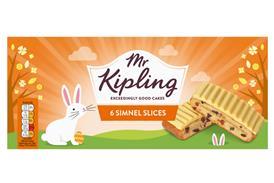





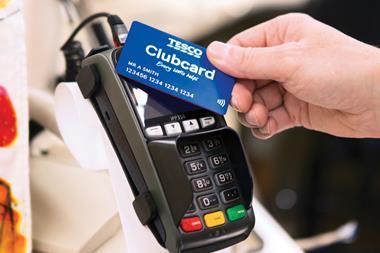


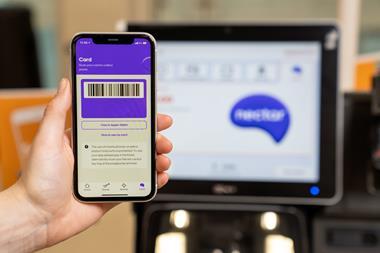

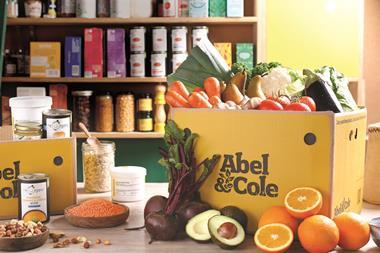
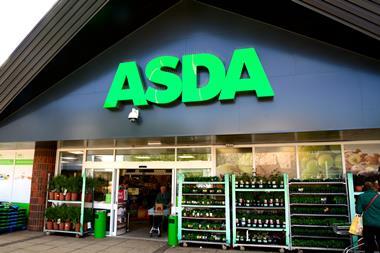
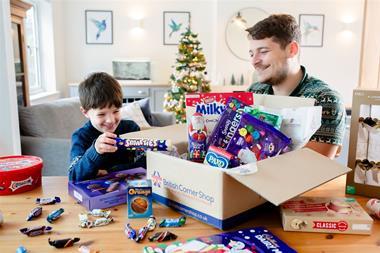
No comments yet